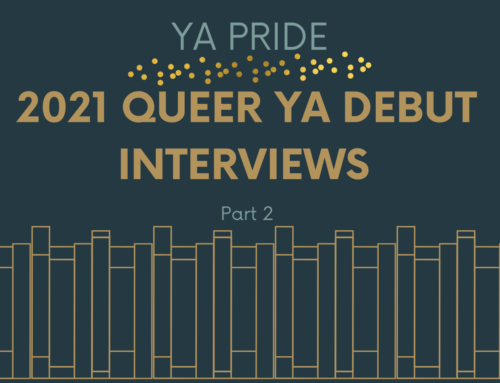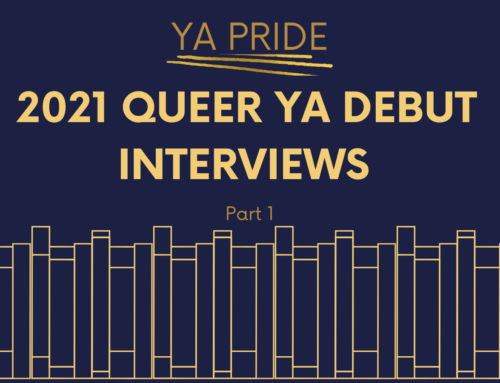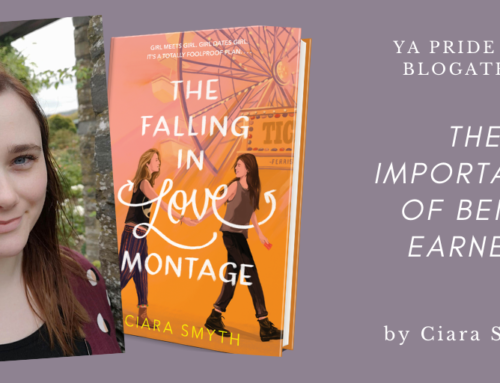
Alice had her whole summer planned. Non-stop all-you-can-eat buffets while marathoning her favorite TV show. The only thing missing from her plan? Her girlfriend (who ended things when Alice told her she’s asexual). Alice is done with dating—no thank you, do not pass go, stick a fork in her, done. But when Alice meets Takumi and she can’t stop thinking about him or the rom com-grade romance feels she did not ask for, her blissful summer takes an unexpected turn.
Claire Kann is the author of the forthcoming novel Let’s Talk About Love, which comes out January 23, 2018.
Let’s Talk About Love will be published through Swoon Reads, an imprint of Macmillan Children’s Publishing Group that invites writers to submit YA manuscript directly to its site and allows readers to have a say in what gets published. Writers chosen for publication are offered a traditional publishing contract.
Here’s Claire in conversation with her editor, Kat Brzozowski.
Kat asks Claire…
What inspired you to write Let’s Talk About Love?
“Write the kind of book you want to read.”
So I did.
Alice has such a strong voice in this novel. How did you develop Alice’s character?
At any given time, I have several characters and storylines running through my mind. Alice popped into my head fully formed. Initially, she had zero chill, tended to overreact, was always laughing and screeching her joy, and cried at the drop of a hat—a lively, raw, and emotionally driven character.
It took a lot of time, finessing, and cut words to whittle her personality down to get to the core of who Alice was. In the first draft, I wrote LTAL in first person, but upon editing, I realized Alice was just too chaotic to steer the narrative, so I switched to third person in efforts to give the story the structure it needed—Alice told me what happened, I wrote it down.
However, I still wanted her to be able to shine. I would write a section and Alice would throw out a million asides—I ended up incorporating her exact words into the book using parenthesis.
Alice identifies as asexual. How did this help shape her character?
When Alice came to me, she had already known she was biromantic asexual but didn’t know those specific words existed. I decided to set the story after that tumultuous period of discovery and self-acceptance because it definitely shaped how she interacted with the people she was romantically interested in. Alice, the hopeless romantic that she is, was so insistent on focusing on a her future HEA that it became the one thing she wanted most, which I believe is always the most compelling story to tell.
What made you submit your novel to Swoon Reads?
I adored Love Fortunes and Other Disasters by Kim Karalius. I read it on the site, pre-selection. I even remember the original title! LTAL was kind of an outlier for me. Contemporary romance isn’t my preferred genre to write. My work typically dives into the magical side of life. Seeing Kim’s book get chosen for publication, in all of its quirky, whimsical, Kissingtown-esque glory, gave me hope that there might’ve been a place for me and my strange, magical books at Swoon Reads.
How did the feedback from readers on Swoon Reads help guide your writing process?
Pre-selection, the majority of the feedback was open, positive, and constructive. Post-selection, the original manuscript had remained up on the site for a limited time, and there was an influx of new reviews that were decidedly less positive—some were flat-out negative, invalidating, and angry. I won’t lie: sifting through those negative reviews was an emotionally brutal process and hurt me both as a writer and as a person more than I thought it would. But I still had time to correct my mistakes. It would have been irresponsible of me to ignore what they had to say. I became determined to find a common root for the issues pointed out and apply those changes during edits.
Do you have any advice for aspiring writers, particularly for those writing books with LGBTIA+ characters?
Critique partners and beta readers aren’t for everyone, but I would suggest thinking twice about writing in a bubble. Everyone has internalized biases and prejudices that they aren’t aware exist. Those will show up in the work—even if it’s considered #ownvoices, they’ll still be there. Write your truth, but also seek feedback, compensate your readers for their time, be open to listening and learning from differing experiences, and always strive to do better.
Claire asks Kat…
When I found out you were going to edit LTAL, I nearly fainted because of your author list. How do you approach working with such an eclectic and diverse group of authors?
*blushes* No matter what kind of book I’m working on, whether it’s magical realism, LGTBQIA+ contemporary, a mystery, or a genre book, I’m always drawn to a few key things – a strong sense of voice, fully developed characters, and great dialogue. I love working on so many different genres because my editing workload always feels totally fresh, and I learn new things from every author on my list.
Does your editing process change depending on the book you’re working on or do you employ a one-size fits all approach?
It definitely changes based on the book I’m working on! Some books need more editorial help when it comes to big picture changes – restructuring the plot, clarifying character motivations, etc. Some books have all of the big stuff worked out but need time finessing the writing on the sentence level – making the dialogue feel natural, letting the voice shine through. I try to start with big picture notes and work towards the smaller notes as we progress, because it doesn’t make a lot of sense to edit lines that are going to be cut later when we chop scenes away! I love to line edit, though, so I can’t help making line notes here and there, even in early drafts.
Does the feedback from Swoon Readers affect how you approach an edit letter?
Definitely! Before I start editing a Swoon Reads book, I look at all of the comments from our trusty readers, and I often incorporate their feedback into my editorial letter. It’s especially useful when I see the same comment over and over; that means there’s a big glaring thing that’s hanging up readers, and that’s what the author and I should focus on first. It’s wonderful to have real readers offer feedback on a novel before it’s even published!
Is Swoon Reads open to using sensitivity readers during the editing process if needed? How do you approach potentially incorporating the feedback?
Definitely! We are always open to using sensitivity readers on our novels. The process of incorporating feedback from these readers starts with sharing their feedback with the author and talking about what changes should be made to the text. The author has to feel comfortable with the final product, of course, so we always discuss any changes that should be made first and then work together to make these changes. We always appreciate sensitivity reads because they help draw our attention to issues that the editor and the author aren’t always aware of.
The colors for the final LTAL cover were purposefully chosen to reflect the asexual flag. As an editor, do you have any part in deciding which elements of representation appear on the covers?
I swoon so hard for the Let’s Talk About Love cover! As an editor, I offer suggestions about what the cover should look like and provide background info like character descriptions, setting descriptions, and more, but the designer has a lot of freedom to play around, and the designers often come up with ideas I never would have thought of! What’s so great about Swoon Reads is that our users vote on the cover direction they want, and we were so excited they chose this beautiful cover for your book.




